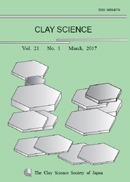Volume 16, Issue 1
Displaying 1-12 of 12 articles from this issue
- |<
- <
- 1
- >
- >|
-
Article type: Cover
2012Volume 16Issue 1 Pages Cover1-
Published: 2012
Released on J-STAGE: June 22, 2017
Download PDF (41508K) -
Article type: Appendix
2012Volume 16Issue 1 Pages App1-
Published: 2012
Released on J-STAGE: June 22, 2017
Download PDF (98K) -
Article type: Appendix
2012Volume 16Issue 1 Pages App2-
Published: 2012
Released on J-STAGE: June 22, 2017
Download PDF (98K) -
Article type: Appendix
2012Volume 16Issue 1 Pages App3-
Published: 2012
Released on J-STAGE: June 22, 2017
Download PDF (98K) -
Article type: Appendix
2012Volume 16Issue 1 Pages App4-
Published: 2012
Released on J-STAGE: June 22, 2017
Download PDF (98K) -
Article type: Article
2012Volume 16Issue 1 Pages 1-8
Published: 2012
Released on J-STAGE: June 22, 2017
Download PDF (854K) -
Article type: Article
2012Volume 16Issue 1 Pages 9-13
Published: 2012
Released on J-STAGE: June 22, 2017
Download PDF (1186K) -
Article type: Article
2012Volume 16Issue 1 Pages 15-18
Published: 2012
Released on J-STAGE: June 22, 2017
Download PDF (601K) -
Article type: Article
2012Volume 16Issue 1 Pages 19-23
Published: 2012
Released on J-STAGE: June 22, 2017
Download PDF (1731K) -
Article type: Appendix
2012Volume 16Issue 1 Pages App5-
Published: 2012
Released on J-STAGE: June 22, 2017
Download PDF (87K) -
Article type: Cover
2012Volume 16Issue 1 Pages Cover2-
Published: 2012
Released on J-STAGE: June 22, 2017
Download PDF (24K) -
Article type: Cover
2012Volume 16Issue 1 Pages Cover3-
Published: 2012
Released on J-STAGE: June 22, 2017
Download PDF (24K)
- |<
- <
- 1
- >
- >|
